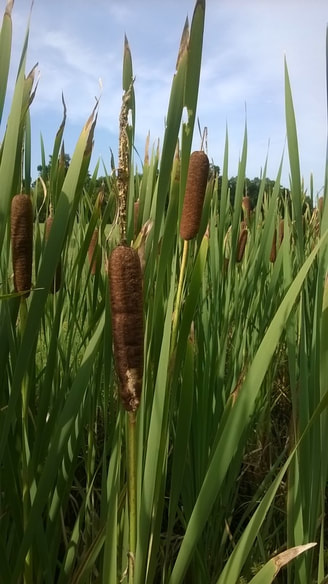ServicesWetland Delineations
Preliminary WOTUS Determinations CWA Section 404/401 Permits Wetland & Stream Mitigation Stream Bioassessments & Monitoring Natural Resource Inventories Habitat Assessments Watershed Inventories Trail Assessments & Inventories NEPA Report Writing Environmental Regulations Seminars Statement of Qualifications
|
Providing Wetlands & Environmental Consulting Services Nationwide
- primarily pursuing projects in Arkansas, Oklahoma, Kansas, & Missouri |
Status of the definition of "waters of the U.S."?A few WOTUS terms defined per the pre-2015 regulations, guidance documents, and 2023 Sackett case ruling:
Adjacent: having a continuous surface connection, per SCOTUS' Sackett case ruling. Unclear how "continuous surface connection" will be defined in the implementation of the conforming 2023 WOTUS Rule. Traditionally Navigable Water (TNW): waters that are subject to the ebb and flow of the tide and/or are presently used, or have been used in the past, or may be susceptible for use to transport interstate or foreign commerce. Relatively Permanent Water (RPW): tributaries that flow year-round or have continuous flow at least seasonally, and that flow directly or indirectly into a TNW (i.e., perennial or intermittent flow). Non-Relatively Permanent Water: tributaries that do not have continuous flow at least seasonally (i.e., ephemeral flow). SUPREME COURT RULING: The wetland areas defined as jurisdictional has been narrowed in the recent Sackett V. Environmental Protection Agency, Docket No. 21-454, ruling which was released May 25, 2023. Per the Sackett case ruling, two conditions must be met for CWA jurisdiction over an adjacent wetland: 1.) The adjacent body of water is relatively permanent and connected to traditional interstate navigable waters, and 2.) the wetland has a continuous surface connection with that relatively permanent water, making it ”difficult to determine where the ‘water’ ends and the ‘wetland’ begins.” |
Recent Significant WOTUS Dates -
August 30, 2021 Navigable Waters Protection Rule (aka Trump Rule) vacated nationwide due to US District Court for the District of Arizona court decision (No. CV-20-00266-TUC-RM). WOTUS definitions revert back to pre-2015 definitions.
.
March 20, 2023 Biden administration's definition of "Waters of the U.S." (aka 2023 WOTUS Rule) took effect nationwide.
April 12, 2023 Preliminary injunction by a federal judge in the US District Court for the District of North Dakota, blocked implementation of the 2023 WOTUS Rule, pending the outcome of the lawsuit filed by the 24-state coalition in the U.S. District Court in North Dakota. The lawsuit is led by West Virginia and includes the states of Alabama, Alaska, Arkansas, Florida, Georgia, Indiana, Iowa, Kansas, Louisiana, Mississippi, Missouri, Montana, Nebraska, New Hampshire, North Dakota, Ohio, Oklahoma, South Carolina, South Dakota, Tennessee, Utah, Virginia, and Wyoming. Texas and Idaho were previously granted an injunction in March, halting the rule there as well. WOTUS definition reverts back to pre-2015 definitions in these states.
May 25, 2023 Supreme Court ruling in the Sackett v. EPA court case (21-454) appears to narrow the definition of WOTUS in regards to adjacency of wetlands and inclusion as jurisdictional WOTUS. It is not completely known at this time how the USACE will interpret the ruling in their implementation of the Clean Water Act. It appears that Significant Nexus will no longer be used and that ephemeral drains are no longer considered waters of the U.S.
September 8, 2023 EPA published in the Federal Register the final rule conforming key aspects of the 2023 WOTUS Rule’s regulatory text to SCOTUS’s decision in the Sackett case. The conforming rule became immediately effective nationwide with an exception for 27 litigating states (see above April 12th action).
November 15, 2023 EPA and Corps of Engineers webinar presentation to Tribes and States detailing the amendments to the 2023 WOTUS Rule (or pre-2015 regulatory regime) to conform to the Sackett case ruling. Several important revised WOTUS definitions were shared via the PowerPoint as following:
Adjacent - having a "continuous surface connection" (CSC)
Continuous Surface Connection - wetlands either physically abut or touch the paragraph (a)(1) or relatively permanent water, or are connected to the paragraph (a)(1) or relatively permanent water by a discrete feature like a non-jurisdictional ditch, swale, pipe, or culvert.
Relatively Permanent Standard -
Relatively permanent waters include tributaries that have flowing or standing water year-round or continuously during certain times of year.
•“Certain times of the year” is intended to include extended periods of standing or continuously flowing water occurring in the same geographic feature year after year, except in times of drought.
•Relatively permanent flow may occur seasonally, but the phrase is also intended to encompass tributaries in which extended periods of standing or continuously flowing water are not linked to naturally recurring annual or seasonal cycles.
Relatively permanent waters do not include tributaries with flowing or standing water for only a short duration in direct response to precipitation.
•“Direct response to precipitation” is intended to distinguish between episodic periods of flow associated with discrete precipitation events versus continuous flow for extended periods of time.
•No minimum flow duration has been established because flow duration varies extensively by region.
August 30, 2021 Navigable Waters Protection Rule (aka Trump Rule) vacated nationwide due to US District Court for the District of Arizona court decision (No. CV-20-00266-TUC-RM). WOTUS definitions revert back to pre-2015 definitions.
.
March 20, 2023 Biden administration's definition of "Waters of the U.S." (aka 2023 WOTUS Rule) took effect nationwide.
April 12, 2023 Preliminary injunction by a federal judge in the US District Court for the District of North Dakota, blocked implementation of the 2023 WOTUS Rule, pending the outcome of the lawsuit filed by the 24-state coalition in the U.S. District Court in North Dakota. The lawsuit is led by West Virginia and includes the states of Alabama, Alaska, Arkansas, Florida, Georgia, Indiana, Iowa, Kansas, Louisiana, Mississippi, Missouri, Montana, Nebraska, New Hampshire, North Dakota, Ohio, Oklahoma, South Carolina, South Dakota, Tennessee, Utah, Virginia, and Wyoming. Texas and Idaho were previously granted an injunction in March, halting the rule there as well. WOTUS definition reverts back to pre-2015 definitions in these states.
May 25, 2023 Supreme Court ruling in the Sackett v. EPA court case (21-454) appears to narrow the definition of WOTUS in regards to adjacency of wetlands and inclusion as jurisdictional WOTUS. It is not completely known at this time how the USACE will interpret the ruling in their implementation of the Clean Water Act. It appears that Significant Nexus will no longer be used and that ephemeral drains are no longer considered waters of the U.S.
September 8, 2023 EPA published in the Federal Register the final rule conforming key aspects of the 2023 WOTUS Rule’s regulatory text to SCOTUS’s decision in the Sackett case. The conforming rule became immediately effective nationwide with an exception for 27 litigating states (see above April 12th action).
November 15, 2023 EPA and Corps of Engineers webinar presentation to Tribes and States detailing the amendments to the 2023 WOTUS Rule (or pre-2015 regulatory regime) to conform to the Sackett case ruling. Several important revised WOTUS definitions were shared via the PowerPoint as following:
Adjacent - having a "continuous surface connection" (CSC)
Continuous Surface Connection - wetlands either physically abut or touch the paragraph (a)(1) or relatively permanent water, or are connected to the paragraph (a)(1) or relatively permanent water by a discrete feature like a non-jurisdictional ditch, swale, pipe, or culvert.
Relatively Permanent Standard -
Relatively permanent waters include tributaries that have flowing or standing water year-round or continuously during certain times of year.
•“Certain times of the year” is intended to include extended periods of standing or continuously flowing water occurring in the same geographic feature year after year, except in times of drought.
•Relatively permanent flow may occur seasonally, but the phrase is also intended to encompass tributaries in which extended periods of standing or continuously flowing water are not linked to naturally recurring annual or seasonal cycles.
Relatively permanent waters do not include tributaries with flowing or standing water for only a short duration in direct response to precipitation.
•“Direct response to precipitation” is intended to distinguish between episodic periods of flow associated with discrete precipitation events versus continuous flow for extended periods of time.
•No minimum flow duration has been established because flow duration varies extensively by region.


